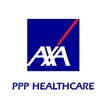Varicocele
A varicocele is a collection of enlarged veins within the scrotum, similar to varicose veins that can occur in the legs. Varicoceles typically develop during puberty and are more common in young men, usually between the ages of 15 and 25. However, they can develop at any age and tend to develop gradually over time.
Symptoms
Many individuals with a varicocele do not experience symptoms. When symptoms do occur, they may include:
- Pain or discomfort: This can range from a dull ache to sharp pain, and it may worsen after physical activity or prolonged standing.
- Visible or palpable enlarged veins: These can sometimes be seen or felt within the scrotum.
- Swelling: The affected testicle may become swollen.
- Fertility issues: Varicoceles can sometimes be associated with reduced fertility, affecting sperm production and quality.
- Testicular atrophy: The affected testicle may shrink in size.
Treatment options
Treatment for a varicocele is often not necessary unless it causes symptoms or fertility problems. Options include:
- Observation: For minor cases without symptoms, regular check-ups might be sufficient.
- Pain relief: Over-the-counter pain relievers like ibuprofen or paracetamol can help manage discomfort.
- Surgery: Several surgical options exist to repair a varicocele:
- Open surgery (varicocelectomy): A traditional approach where an incision is made to access the affected veins.
- Laparoscopic surgery: Minimally invasive surgery using small incisions and a camera.
- Percutaneous embolisation: A less invasive procedure where a radiologist inserts a catheter to block the blood flow to the affected veins.
Management
- Pre-surgery assessment: Includes physical examination, scrotal ultrasound, and possibly semen analysis if fertility is a concern.
- Surgical procedure: Depending on the method, surgery can take from one to a few hours and is usually performed under general or local anaesthesia.
- Post-surgery care: Includes pain management, wearing a scrotal support, and avoiding strenuous activities for a prescribed period.
Risks associated with treatment
As with any medical procedure, varicocele treatment carries certain risks, including:
- Infection: Potential risk of infection at the incision site.
- Hydrocele formation: Fluid accumulation around the testicle.
- Recurrence: The varicocele can recur after treatment.
- Testicular atrophy: Though rare, there is a risk of shrinkage of the testicle.
- Pain: Persistent pain may continue even after surgery.
- Damage to surrounding structures: This includes potential damage to the testicular artery.
Recovery
- Initial recovery: Typically, patients can return home the same day or the day after surgery. Rest is crucial during the first few days.
- Activity restrictions: Avoid heavy lifting, strenuous activities, and sexual activity for several weeks as recommended by the doctor.
- Follow-up: Regular follow-up appointments to monitor healing and address any complications.
- Pain management: Pain or discomfort is usually managed with prescribed medications and over-the-counter pain relief medication
- Long-term monitoring: Regular check-ups to ensure the varicocele has not recurred and to assess any impacts on fertility, if relevant.
Recovery timelines vary, but most patients can return to normal activities within a few weeks, with full recovery expected within a few months.
Why choose Birmingham Urology Centre
At Birmingham Urology Centre, our experienced urologists provide comprehensive evaluation and treatment for varicoceles. We use the latest diagnostic tools and techniques to ensure accurate diagnosis and effective treatment plans tailored to your needs.
Contact us today to book an appointment or for more information on varicoceles and treatment options.








